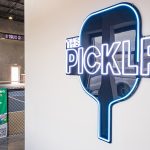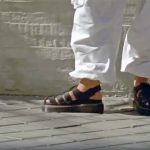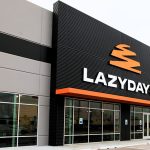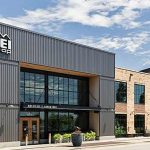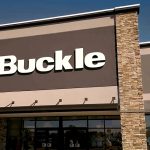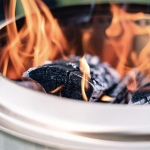A number of outdoor brands have brought aspects of production back to the United States to improve just-in-time fulfillment capabilities.
This “near sourcing” is being motivated in part by a desire to help retailers increase their inventory turns and cash flow something industry leaders say is critical in a business handful where profit margins average around five percent and credit has become harder to obtain.
Among the brands that have increased their near sourcing for spring 2011 are Gramicci, Guyot Designs and Keen, which is sourcing its new line of retro vulcanized canvas Santiago shoes from the Dominican Republic.
The potential of near sourcing is particularly significant with apparel, because it would enable retailers to replenish their floors sets much more frequently than two to three times a year. Apparel sales are crucial to profits because they generate a third of outdoor specialty retailers’ annual sales and offer gross margins approaching 50%, or 10 points higher than equipment sales, according to survey data from Outdoor Industry Association (OIA).
Many outdoor apparel executives argue the industry’s two-season calendar based in many instances on the ski shop model – results in very static apparel assortments that provide customers little incentive to return to stores. On average, outdoor retailers turn over their apparel inventory 3.2 times per year, according to a 2007 survey by OIA. The Gap, by comparison, turned over its merchandize inventory 5.7 times in 2009.
“There are two important things the outdoor industry is extremely slow to pick up on,” said Marty Weening, president for the outdoor lifestyle apparel brand Gramicci. “One is turn and the other is reducing risk for mark down. It’s very important to outdoor stores that they begin responding to consumer buying habits.”
Gramicci introduced a new “GRP”- Gramicci Replenishment Program for Spring 2011 designed to help dealers reduce their inventory risk and increase turns. The company will import 15 core styles in pants and tops in men’s and women’s wear and will dye and finish them locally in California. This will enable the company to replenish any of the items in the program in up to six colors within 15 days.
Specialty Retailers Could See Upside in Improved Turn…
The program is designed to enable dealers to reduce up front risk commitments and spread those dollars across more colors, and then replenish more frequently in season as it becomes clear what colors sell best.
Gramicci has negotiated low minimum order requirements with its dye house so that its dealers can order as few as six pieces of a particular style and color at a time. This will allow small independent dealers to reorder up to 10 or 15 times a year, Weening said.
“We can help them stimulate the sales floor by helping with the visual side of merchandising,” said Weening. “That is what we are trying to encourage the outdoor industry to do, because we need to be more nimble and quick to responding to consumers rather than bringing in product twice and crossing our fingers in hope they will buy it. We are increasing their flexibility and ability to capitalize on fast-selling items and replenish into colors that are selling.”
The planned potential reward for Gramicci is 20% increase in sales of GRP items and an increase in total sales of 3% to 5%. The risk is that not enough reps and dealers will be willing to change their purchasing behavior to take advantage of the program or will simply shift their open to buy money elsewhere. So far, however, Spring 2011 bookings are up in the high teens, Weening said.
That’s no surprise to Ritchie Sayner, vice president of development at RMSA, a retail consulting firm.
“Most retailers that we talk to would much rather pay several small invoices on a regular basis than one or two huge ones,” said Sayner, who works with several outdoor specialty retailers. “Fresh merchandise translates into more traffic, higher sales, stronger cash flow, faster turn and better margins. No one comes into a store asking to see what came in last year or last season. New goods drive sales. What the outdoor industry is beginning to learn (slowly I might add) is that you can actually sell more with less. What a novel concept.”
At Guyot Designs in Vermont, the decision to bring some injection molding back from Asia was about improving fulfillment to dealers while restoring sanity to an increasingly frenetic work life. In 2007, the company had to spend $300,000 on air freight to rush deliveries to the United States because of late deliveries by Chinese factories struggling to find workers. It ended up moving much of its operations to a factory in Taiwan in 2008.
“Sometimes when we were manufacturing in China there was 30 days of production, 30 days on the ocean and then the labor delays,” noted Josh Guyot, the company’s founder/designer. “We could have capital out there 120 days.”
In late 2009, the company brought production of its Squishy pet bowls back to New York, where it found supply companies for the pharmaceutical industry that could turn dealer orders in 15 days. Guyot Designs has since redesigned the Fireflye a cap that converts most plastic water bottles into lanterns – so it can be manufactured in Maine and is evaluating whether to bring production of more of its Squishy line, plastic utensils and other products that don’t require assembly to New York.
The company will keep significant production in Asia to cater to international customers and remain competitive on large domestic accounts.
Sporting goods executives say national specialty chains like REI, Gander Mountain and Cabela’s understand the benefits of rapidly turning over inventory. The challenge is persuading independent retailers of its virtues.
“If it’s selling in the first two weeks they are on the phone reordering it and those are the guys who are growing their businesses,” said Weening. “The irony is that the people who should be doing it are small independents.”

